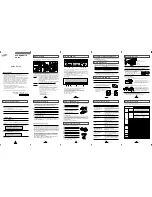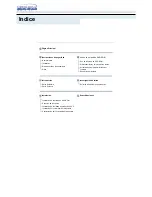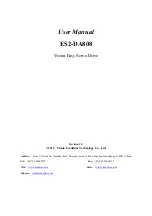
29
GENERAL EMC - HARMONICS - MAINS INTERFERENCE
POWERDRIVE MD2R Installation guide
4948 - 2017.11 / d
en
4.4 - Mains supply
4.4.1 - General
Each industrial power supply has its own intrinsic
characteristics (short-circuit capability, voltage value and
fluctuation, phase imbalance, etc) and supplies equipment
some of which can distort its voltage either permanently or
temporarily (notches, voltage dips, overvoltage, etc). The
quality of the mains supply has an impact on the performance
and reliability of electronic equipments, especially variable
speed drives.
The
POWERDRIVE MD2R
is designed to operate with
mains supplies typical of industrial sites throughout the
world. However, for each installation, it is important to know
the characteristics of the mains supply in order to carry out
corrective measures in the event of abnormal conditions.
4.4.2 - Mains transient overvoltages
There are numerous sources of overvoltages on an electrical
installation:
• Connection/disconnection of banks of power factor
correction capacitors
• High-power thyristor-controlled equipment (oven, DC drive,
etc)
• Results of lightning
4.4.2.1 - Connection/disconnection of a bank of power
factor correction capacitors
Connecting power factor correction capacitors in parallel on
the drive power supply line when the drive is running can
generate transient overvoltages that are likely to trip the drive
safety devices, or even damage it in extreme cases.
If banks of power factor correction capacitors are used on the
power supply line, make sure that:
• The threshold between steps is low enough to avoid
causing overvoltage on the line
• The capacitors are not permanently connected
4.4.2.2 - Presence of commutation notches on the line
When high-power thyristor-controlled equipment is connected
on the same line as the drive, it is essential to ensure that
the harmonics generated by the commutation notches do
not excessively distort the mains voltage and do not create
voltage peaks with amplitude higher than 2 x mains Vrms. If
this is the case, it is essential to take corrective measures by
inserting a choke in the line supplying the thyristor-controlled
equipment or by moving the drive power supply line to
another source.
4.4.3 - Unbalanced power supply
Similar to what is observed on an electric motor, the line
current imbalance of a drive operating on an unbalanced
mains supply may be several times the value of the
voltage imbalance measured on the power supply. A highly
unbalanced mains supply (>2%) associated with a low
mains impedance may result in a high level of stress on the
components at the input stage of a drive.
4.4.4 - Ground connections
The equipotential earth bonding of some industrial sites
is not always observed. This lack of equipotentiality leads
to leakage currents which flow via the earth cables (green/
yellow), the machine chassis, the pipework, etc, and also
via the electrical equipment. In some extreme cases, these
currents can trip the drive.
It is essential that the earth network is designed and
implemented by the installation supervisor so that its
impedance is as low as possible, so as to distribute the fault
currents and high-frequency currents without them passing
through electronic equipment.
Metal grounds must be mechanically connected to each other
with the largest possible electrical contact area. Under no
circumstances can the earth connections designed to protect
people, by linking metal grounds to earth via a cable, serve as
a substitute for the ground connections (see IEC 61000-5-2).
The immunity and radio-frequency emission level are directly
linked to the quality of the ground connections.
















































